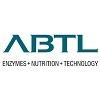Check out what is new in Poultry Industry
Find the best technical articles, forums, and videos on Poultry Industry at Engormix. Enter now and interact with the world's largest agricultural social network.

Dr. PrakashBabu Manilla, Chief Geneticist at Venkateswara Hatcheries, explains how the company supplies over 75% of India’s commercial layer chicks—meaning seven out of every ten eggs come from their genetics. He highlights strong growth in the egg sector, driven by rising demand for affordable protein across the country. With solid domestic expansion and increasing export potential, the future of India’s layer industry looks highly promising. ...
Comments : 0
Recommendations: 0

Dr. Vishwas Sagajkar, DGM Marketing at Venkys India, outlines how shifting weather patterns are driving higher fungal contamination and a surge of multiple mycotoxins in Indian feed ingredients. He highlights the dominance of fumonisin in corn and DDGS, alongside other recurring toxins such as aflatoxin, ochratoxin, citrinin, and T2. ...
Comments : 0
Recommendations: 0

Fran Alonso, Global Commercial Director at Liptosa, outlines the company’s 25+ years developing phytogenics, organic acids, mycotoxin binders, and specialty additives. He highlights how modern genetics and market complexity demand more efficient nutrition and innovative solutions. *Certain information associated with products, their composition and claims may be different depending on the geographical region and may not be applicable in all countries. Liptosa reserves the right...
Comments : 0
Recommendations: 0

Deepak Khosla from the Venkys Group highlights steady growth in India’s poultry sector alongside rising challenges: mycotoxins, biosecurity gaps, and weakened immune responses. He stresses strict vaccination programs, strong biosecurity after global avian influenza events, and better water and shed management. With climate-driven grain contamination increasing, producers must adopt precise solutions to protect flock performance. ...
Comments : 0
Recommendations: 0

Josep García Sirera, Toxin Solutions Manager at Agrimprove/ Special Nutrients explains how Bio-Bantox Plus combines two bentonites—one natural and one processed—to capture the full range of mycotoxins. The dual polarity approach binds both hydrophilic toxins like aflatoxin and lipophilic toxins such as DON or zearalenone. Its lipophilic component also neutralizes pesticides, chemical residues, and endotoxins, making it a complete toxin-binding...
Comments : 0
Recommendations: 1

Andrew Vignati from VICAM speaks about the benefits of using this technology for mycotoxin detection in the feed ...
Comments : 0
Recommendations: 0

Mr. O. P. Singh, Managing Director at ABTL, shares key insights from Poultry Knowledge Day and calls on current and future poultry leaders to work with unity, one voice, and a shared mission to elevate India’s industry. ...
Comments : 0
Recommendations: 0

Mukesh Kumar Meshram, Principal Secretary of Animal Husbandry in Uttar Pradesh, explains the region’s poultry supply gap and the need for new farms and hatcheries. He highlights low egg availability, lack of technical training, and the urgency to improve cattle genetics. The state seeks private sector involvement to modernize infrastructure, boost productivity, and strengthen disease control. ...
Comments : 0
Recommendations: 2
1. Introduction The gastrointestinal tract is a dynamic and complex environment that requires a correlation between the gut microbiota and the host for good functionality [1–3]. The composition of the gut microbiota changes throughout the life of the animal or due to various factors like the environment, behavior, and diets [4]. Studies indicate a strong correlation between intestinal diseases and the constitution of the microbiota [1,2]. A healthy gut is an essential...
Comments : 0
Recommendations: 0
Introduction Dorsal cranial myopathy (DCM) is characterized by muscular changes, including degenerative and multiphasic lesions that specifically affect the anterior Latissimus dorsi (ALD) muscle in chickens, a superficial, bilateral muscle located in the dorsal region of the wings, which functions as an abductor of the humerus and wings [1–4]. Macroscopically, the ALD muscle region affected by DCM shows yellow, odorless, gelatinous edema under the skin [5,6]. The muscle...
Comments : 0
Recommendations: 0


Will New Version of GMP Boost the Veterinary Drugs Industry?
Suggested link
Introduction Current poultry production targets at reducing productions costs and nitrogen excretion into the environment while maintaining an effective animal performance. The key to limit nitrogen excretion is a reduction of the protein content of the diet with concurrent supplementation of deficient and (performance-)limiting amino acids (AA). The aim is to provide balanced quantities of individual AA at the sites of protein synthesis, which have to be further balanced with...
Comments : 0
Recommendations: 0
Just taking this opportunity with this medium to see if there is good community feedback on how we should be thinking about environmental management and microbiology together?
We usually keep them very separate - with certain key identifying data now being leveraged between them. However, it seems like the microbiology data is flowing more to management needs - but I don't see many indications of environmental management parameters flowing back to microbiology...
Comments : 0
Recommendations: 1

Jonathan Cade, Chairman of the U.S. Poultry & Egg Association, explains how IPPE generates the resources that fund essential research, education programs, and industry support across broilers, layers, and turkeys. He highlights the organization’s role in advancing animal health, productivity, and training the next generation of professionals who will shape the future of the poultry sector. ...
Comments : 0
Recommendations: 1

Mr. Suresh Chitturi, Vice Chairman & Managing Director of Srinivasa Farms, shares his perspective on the critical role elite genetics play in India’s poultry production. He also highlights the key opportunities ahead and the challenges the industry must address to sustain its growth. ...
Comments : 0
Recommendations: 2

Magicoh Pellet Binder provides a cost-effective solution to solve your binding problems. In fish/shrimp/prawn feed, it’s used to improve water stability and durability, and in poultry and piglet feed, it can enhance PDI and reduce the production of dust. It helps you produce a pellet rather than dust. Contact me for more information: Email: jzfong@de-mark.com WhatsApp: +8613588089289 WeChat ID: a97896085a ...
Comments : 0
Recommendations: 0
Featured comment:

Litter condition is directly related to water spillage, due to faulty equipment, faulty management, and carelessness. The correct height of the drinkers and the level of water are important.
Nipple drinkers with drip cups work well even in litter if perching is avoided carefully. Leakages, even drop by drop, must be attended to and stopped as soon as found. Selling gut health products should be secondary. ...
Comments : 2
Recommendations: 2
Featured comment:

Your results are very encouraging. Has this research been published in a peer-reviewed journal? If, kindly share the DOI....
Comments : 2
Recommendations: 2

Michael Joseph, Assistant Professor & Extension Specialist at NC State University, discusses the potential and caveats of using alternative protein sources in animal production during this Engormix interview. ...
Comments : 0
Recommendations: 0

In this Engormix interview, Michael Joseph, Assistant Professor & Extension Specialist at NC State University, discusses the use of various combinations of feed additives to maintain gut health and how technology and precision nutrition can contribute. ...
Comments : 0
Recommendations: 0
Growth of the modern broiler is very adaptable to a vast range of diet nutrient densities, and so formulation matrices are greatly impacted by prevailing economic situations. The broiler still eats quite precisely to its energy needs and alters its feed intake in response to variable diet energy level. For example, 25-35d broilers can be fed diets a low as 2850 kcal/kg or as high as 3500 kcal/kg as seen in some locations, and growth rate is little impacted if the bird can adjust its feed...
Comments : 10
Recommendations: 5

































.jpg&w=3840&q=75)









